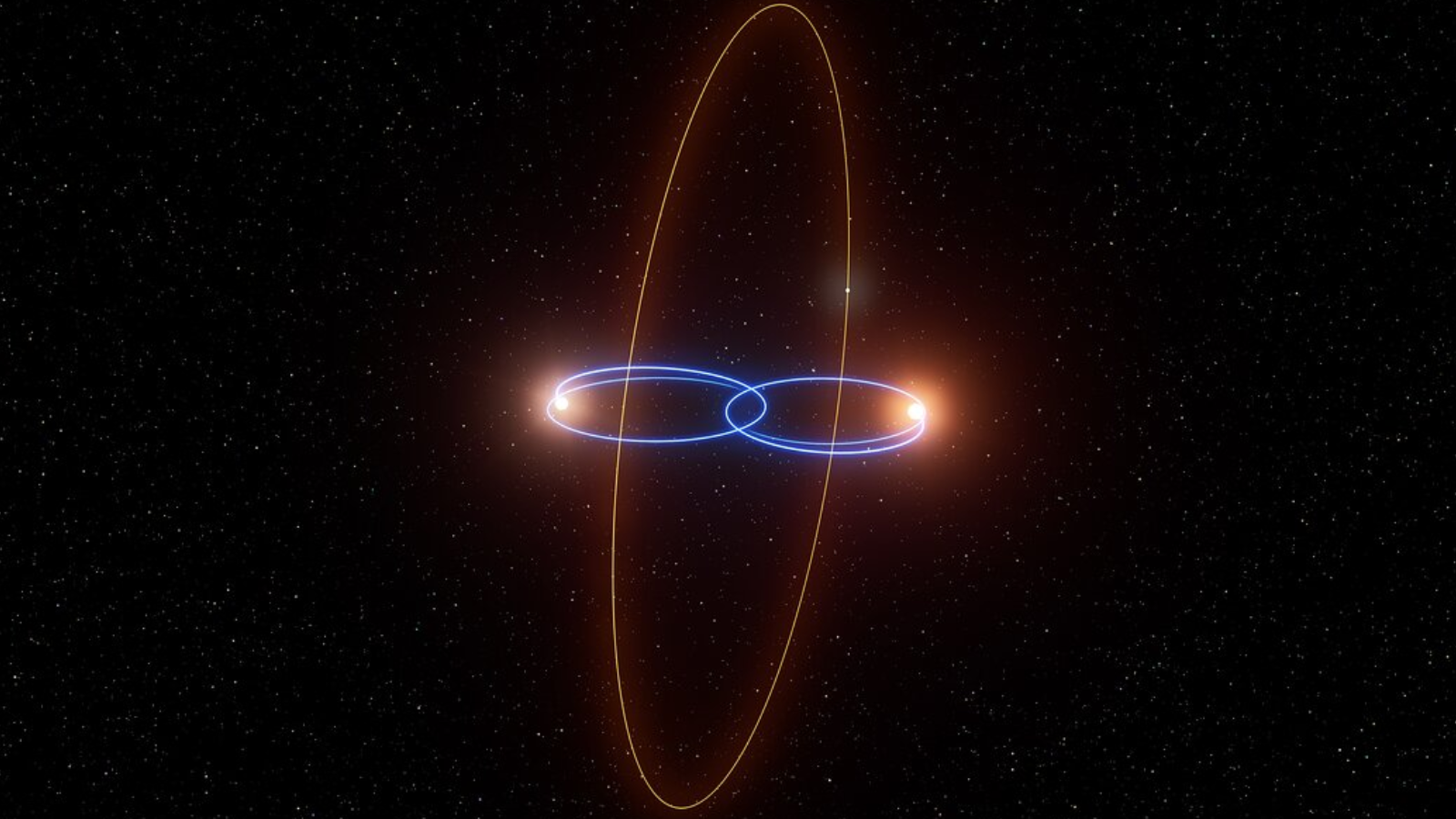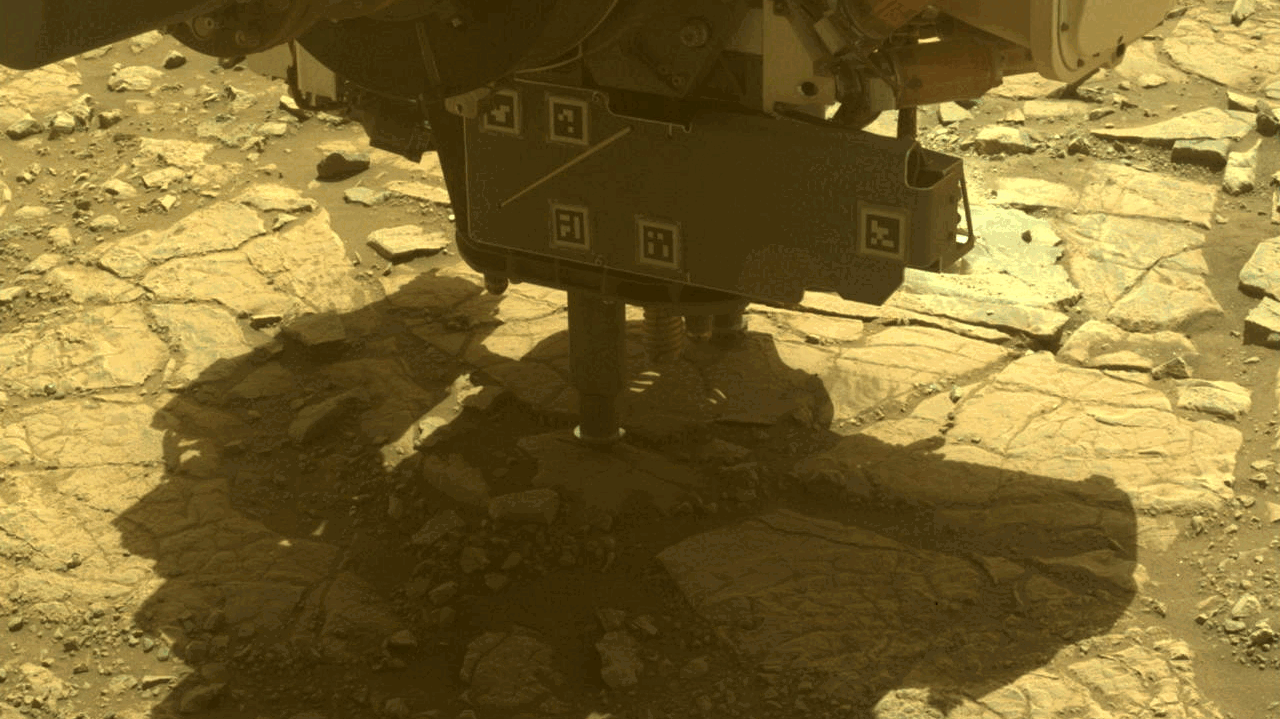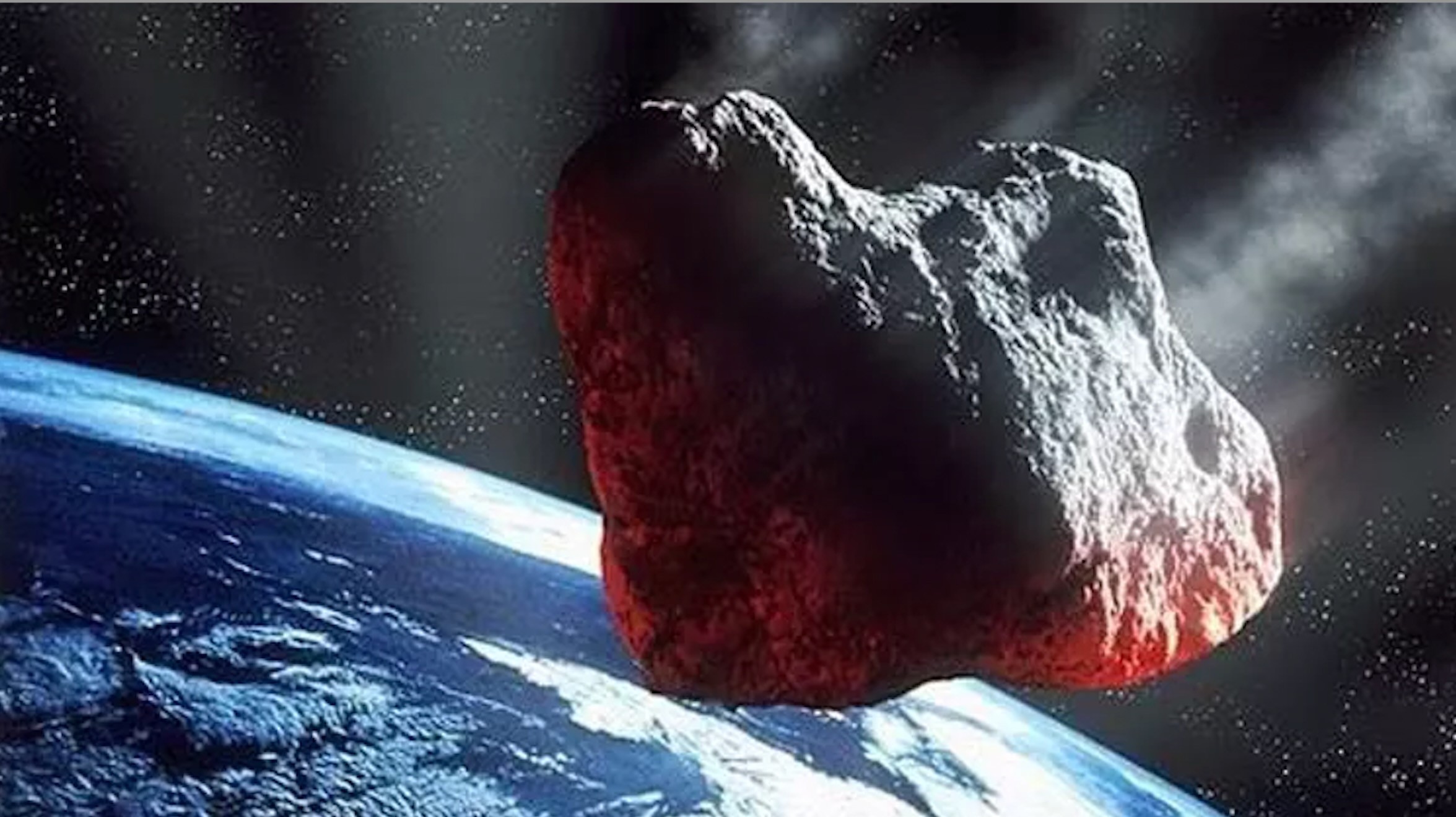
Get out of the way: The 1st restartable solid rocket fuel could help reduce space junk (op-ed)
The breakthrough could allow cubesats to safely maneuver and de-orbit.

Nicholas Dallmann is a research engineer at Los Alamos National Laboratory, a U.S. Department of Energy facility. He contributed this article to Space.com's Expert Voices: Op-Ed & Insights. The project he describes is funded by Los Alamos Laboratory Directed Research and Development.
In the 2013 movie "Gravity," space junk nearly killed Sandra Bullock. While that story was most definitely fiction (and sensational fiction at that), the threat of space junk is real — so real that NASA has a whole office devoted to tracking and mitigating it. And last year marked the first international conference focused entirely on orbital debris.
There's good reason to be concerned. Currently, about 2,000 operational satellites orbit the Earth — not to mention another 3,000 non-operational ones — and that number is expected to skyrocket. This year, more than 1,500 satellites are scheduled for launch. (Compare this to 2018, when only 365 were launched.)
Related: Space junk explained: The orbital debris threat (infographic)
Space might be big, but it's getting increasingly crowded, and that's a real problem. Low Earth orbit, or LEO, where most satellites travel, is a natural resource. And just like other natural resources, we need to carefully manage it. All it takes is for a few satellites to collide to spur the Kessler effect: a runaway chain reaction where more debris results in more collisions, which could not only damage or destroy virtually every spacecraft in LEO, but render that part of space useless for decades.
But what if you could maneuver satellites on a collision course out of harm's way? Believe it or not, that's not easy to do. Most satellites sent into LEO — particularly small satellites and cubesats — don't have propulsion systems because they tend to be heavy and expensive. They also pose an additional risk to the rocket that's ferrying the satellite into space, as well as any other payloads hitching a ride. That's because the most common rocket propulsion system uses liquid rocket fuel, which is extremely volatile. If you're a small cubesat riding shotgun on a multimillion-dollar rocket and your fickle propulsion system blows up during launch or on the ride into outer space, you've ended the entire mission. Talk about a bad day.
The easiest solution is to use solid rocket fuel instead. It's high-thrust, much safer and low-cost, plus it can be stored for extremely long periods of time. But solid rocket fuel has one huge drawback: It can't be stopped and restarted. Once you ignite it, you have one burn. That's it. And that's a problem for avoiding debris. To avoid collision by changing orbit, you need at least two independent burns: one to rapidly move it out of the way, and one to put it back on its correct orbit. To de-orbit the satellite, you likely need multiple burns as well.
Get the Space.com Newsletter
Breaking space news, the latest updates on rocket launches, skywatching events and more!
At Los Alamos National Laboratory, we're working to change this. We've recently developed and demonstrated the ability to stop and restart solid rocket motors many times — something that has never been done before.
Related: Space junk clean up: 7 wild ways to destroy orbital debris
How it works
A solid rocket is simple, with only a few major components. It includes a combustion chamber containing an ignition system and propellant, and an exhaust nozzle. We recently developed a safer propellant system with separated solid fuel and solid oxidizer. However, in order to make our solid rocket system capable of stopping and restarting, we needed to develop a reusable ignition system and a resettable way to extinguish a burn.
For ignition, we replaced traditional pyrotechnics with water. With our system, a satellite would launch with a small tank of benign water. Once on orbit and just prior to a burn, an electrolyzer would separate the water into hydrogen and oxygen gases. At the moment of ignition, the hydrogen and oxygen would be rapidly injected into the combustion chamber and lit by a spark. The resulting flame would ignite the solid propellant.
The next challenge was to figure out how to extinguish the burn. It has long been understood that a rapid decompression of the chamber can reliably cause a solid rocket to extinguish — but how best to do that? Last year, we developed an aerospike nozzle with a changeable choke area. Once the burn has achieved a desired velocity change, the choke area would be opened, decompressing the chamber and extinguishing the burn. When another burn of the rocket is needed, the choke area is reset to its original position. Repeat as needed.
We have recently demonstrated multiple independent burns from a single solid rocket in static test stands at Los Alamos. The next hurdle will be an on-orbit demonstration. We are working now to refine our system and looking for an opportunity for the demonstration.
We're also looking at developing a payload that is isolated from the main satellite and that contains its own power, has low-bandwidth communications with the ground, has attitude control to establish pointing for a burn and is equipped with our solid rocket system. With this payload, avoiding debris and de-orbiting could possibly be performed many years after the satellite has reached end-of-life.
Solid rockets are not the answer to all potential challenges for addressing the problem of space junk — but their simplicity, ease of scaling to the size of the spacecraft, high thrust and now multiple independent thrusts makes them a great candidate for avoiding orbital debris and deorbiting. Our hope is that someday, these rockets will ride aboard every satellite launched into space — keeping LEO safe and usable for millennia to come.
- Latest news about space junk and orbital debris
- Cubesats: tiny, versatile spacecraft explained (infographic)
- Satellite 'license plates' and re-igniting rocket fuel could head off space junk crashes
Follow all of the Expert Voices issues and debates — and become part of the discussion — on Facebook and Twitter. The views expressed are those of the author and do not necessarily reflect the views of the publisher.
OFFER: Save 45% on 'All About Space' 'How it Works' and 'All About History'!
For a limited time, you can take out a digital subscription to any of our best-selling science magazines for just $2.38 per month, or 45% off the standard price for the first three months.
Join our Space Forums to keep talking space on the latest missions, night sky and more! And if you have a news tip, correction or comment, let us know at: community@space.com.
Nicholas A. Dallmann is a Technical Staff Member at Los Alamos National Laboratory in P-21 Applied Modern Physics. He was the leader of the Prometheus CubeSat development team, and has published extensively in Quantum Key Distribution in optical fiber, handheld radiation detectors, and satellite development. He has also filed multiple patents.
-
Sergiy Fakas You are wrong :) - this engine is not the first ever restartable solid motor in the world. Back in 80-th I've seen soviet classified solid motor able to restart up to 10 (may be) times. It was operational and used for spy sat corrections/film return capsules drop. It uses special powder to extinguish burning and igniter to start engine again.Reply -
dfjchem721 Hello Sergiy, raketa toplivniy*?Reply
I believe you. The CCCP was excellent at engineering, and the Russian space program today is no different. And they have an outstanding record on safety. No fatal Soyuz launches, and the recent aborted launch worked perfectly - with no injuries. I do not recall that a launch ever had to eject the capsule during flight. Was this the first time?
Do you think these rockets you mention are sill being used by various satellites? It sounds like what you are referring to is small scale for orbital adjustments.
The proposed rocket engine here is not exactly new, but also is for orbital corrections. The generation of H2 and O2 from water is something I had not heard of, but the basic design sounds similar to others.
Solid rocket boosters (SRBs) were on the space shuttle because restartable rockets are probably not optimal for launching , at least not with current technology. Even if they were, you do not want to stop rockets during launch, so the SRBs will probably play a role in heavy lift operations for quite a long time to come.
The restartable rocket I remember from some time ago used a solid propellant fixed to the wall of the booster, and O2 injected into this chamber from above. Once ignition begins, the solid fuel is burned off to provide thrust. The supply of oxygen is what makes it restartable. The solid fuel burning can only continue as long as oxygen is injected. So it is easy to stop by simply cutting the flow of O2. Need it again? Just start pumping in O2 and reignite the rocket. You can control start, stop, and thus burn times just by the O2 flow to the combustion chamber.
Have you ever heard of such a rocket? I bet the Soviets worked on something like that also.
* I got this Russian phrase off the internet - solid fuel rocket. If you respond with any Russian, I might have a problem reading it. Let's stick with English!! :) -
Sergiy Fakas Well... Russian space program is dead now. They are building Angara since 1994 and all they did is the wasted launch complex at Vostichniy.Reply
I doubt if the engine I mentioned is in use now. Monopropellant engines are better for this purpose.
As for "a solid propellant fixed to the wall of the booster, and O2 injected into this chamber from above". It is called hybrid engine. From my knowledge Virgins SpaceShip Two uses it. Never heard it to be developed in the Soviet Union.
The main advantage of hybrid rocket engine it comparing to solid motors is not ability to restart but thrust throttling. Solid rocket can't change thrust flexible – thrust throttling depends n the shape f the charge burning. Hybrid rocket is able to change thrust by increasing or decreasing oxidiser flow. -
dfjchem721 "Russian space program is dead now." Sorry to hear that. I was not aware, but I do know that all of Russia has serious financial problems. A shame for all the real people there. Many good people in Russia, they never seem to get a good chance. I have read most of Dostoevsky novels.Reply
They still have an excellent Soyuz program. We even use it! Imagine that, Americans relying on the Russians to put our people into space. That tells you how much NASA trusts our Russian partners! A whole lot!!!
Yes, thrust throttling is something I had forgotten about with hybrid engines. A major advantage. I suppose you could even carry extra propellant in order to re-line the thrust chamber once it is exhausted.
The shape of the charge burning reminds me of how the wall of propellant might be formed in the rocket chamber. For maximum thrust one uses a convoluted pattern giving for maximum thrust. Perhaps star-shaped to maximize surface area.
Are you a "rocket scientist"?! -
Sergiy Fakas I'm not russian. Russia is kills our citizens just 400 km from my home. NASA must stop cooperating with Roskosmos led by Rogozin who is complete idiot and responsible for full degradation of the space industry in Russia. Just look at Sea Launch ships which were moved to Russia from Long Beach and now owner must pay twice as it had to pay in the US port.Reply
Yes, I'm graduated rocket engine engineer but did not have a chance to work as rocket engineer. -
dfjchem721 I had no idea you were not Russian. Where are you from?Reply
And the Russians are still good people, it is their government that is the problem. That seems to be true in a lot of countries. I have read that Iranians hate America, but love the people and our culture. It is clearly all about the governments.
Was not aware that there was so much trouble with Roskosmos. U.S. will not stop working with them because the fools in our government ended the space shuttle program with three prime shuttles that could be used for years to come.
Sorry you cannot work in your profession. Where did you get your degree? -
Sergiy Fakas I'm fro Ukraine. I've graduated airspace university in 1993. Soviet Union was preparing rocket engineers in huge amounts - there were about 200 students who graduated in the same year and as rocket scientists.Reply -
dfjchem721 Now I understand. There are very bad things going on in your country, with all the fighting in the east and seizure of Crimea. My apologies for assuming you were Russian. I think all that happened because of Putin. Most of the Russian people do not support him anymore.Reply
When you noted having seen Soviet engine designs, I made a stupid assumption. Someone else made stupid assumption about U.S. funding of Ukrainian military.
Have also read much about World War II and the Ukraine. Also very bad blood, going back to Soviet revolution. The Ukrainians don't have much luck either, it seems. If it is not the Russians, it is the Germans, then the Russians again. It is a shame your country is not more prosperous.
Did you have a specialty in rocket design, or is your degree in all aspects of their design? -
Sergiy Fakas My speciality was liquid propellant rocket engines with some knowledge of solid rocket motors.Reply -
dfjchem721 So Sergiy, you must follow some of the many dreams about people building habitats on the moon and Mars.Reply
What do you think of the probability of those? It would take a lot of launches to get everything into orbit before you even begin the journey, and then you need to burn a lot of fuel to bring all that mass to escape velocity from earth. If I remember, that is about 11km/sec. Which is much faster than low earth orbit.
Perhaps a hybrid engine would work well for powering the trip to other places. As I noted, you could always replace the fuel in the chamber, since the weight of the rocket housing and other parts is much more than the fuel. But you are the real rocket scientist. Tell me if you think this will ever happen and how is the best way to do it. Clearly getting everything up there and on its way will take a lot of collective thrust.










